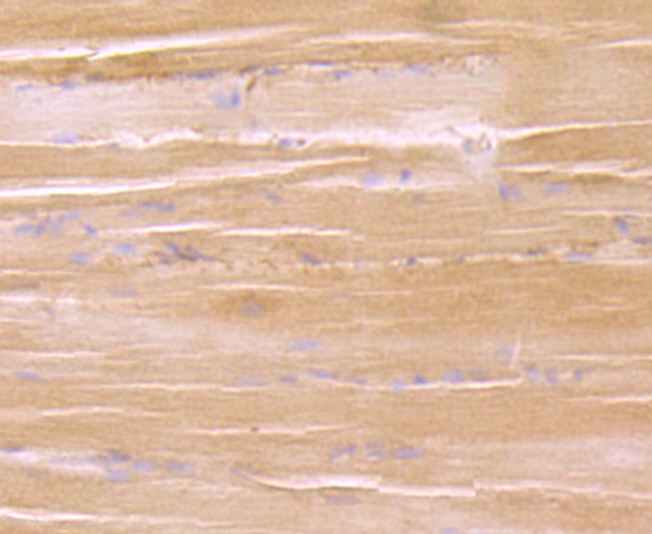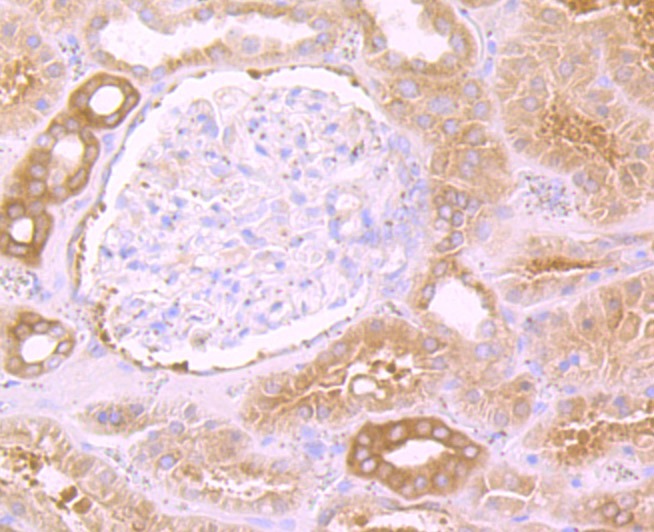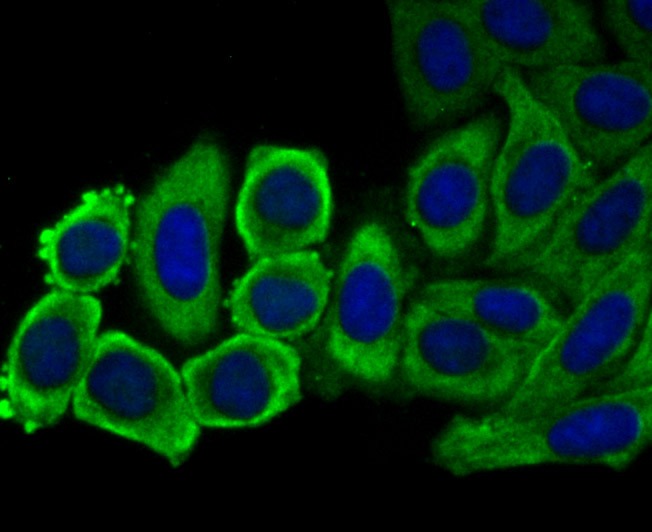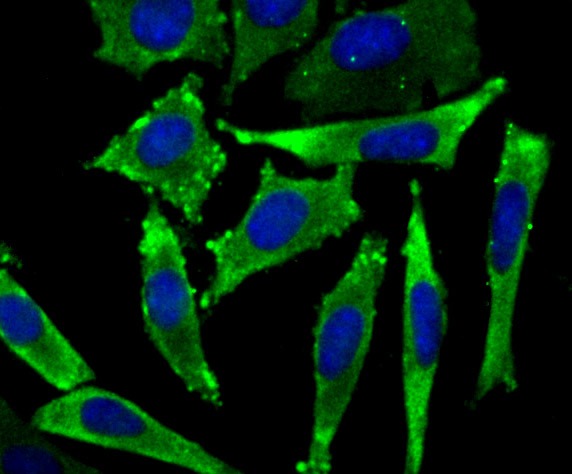Shopping Cart
- Remove All
 Your shopping cart is currently empty
Your shopping cart is currently empty
Anti-EEF1A1 Antibody (9F149) is a Rabbit antibody targeting EEF1A1. Anti-EEF1A1 Antibody (9F149) can be used in FCM,ICC,IF,IHC,IP,WB.
| Pack Size | Price | Availability | Quantity |
|---|---|---|---|
| 50 μL | $296 | 7-10 days | |
| 100 μL | $497 | 7-10 days |
| Description | Anti-EEF1A1 Antibody (9F149) is a Rabbit antibody targeting EEF1A1. Anti-EEF1A1 Antibody (9F149) can be used in FCM,ICC,IF,IHC,IP,WB. |
| Synonyms | Eukaryotic elongation factor 1 A-1 (eEF1A-1), Elongation factor Tu (EF-Tu), Elongation factor 1-alpha 1, EF-1-alpha-1, EEF1A1, EEF1A |
| Ig Type | IgG |
| Clone | 9F149 |
| Reactivity | Human,Mouse,Rat |
| Verified Activity | 1. Western blot analysis of eEF1A1 on different lysates using anti-eEF1A1 antibody at 1/500 dilution. Positive control: Lane 1: Rat brain tissue, Lane 2: Mouse skeletal muscle, Lane 3: Mouse cerebellum, Lane 4: Rat skin, Lane 5: Daudi. 2. Immunohistochemical analysis of paraffin-embedded rat skeletal muscle tissue using anti-eEF1A1 antibody. Counter stained with hematoxylin. 3. Immunohistochemical analysis of paraffin-embedded human tonsil tissue using anti-eEF1A1 antibody. Counter stained with hematoxylin. 4. Immunohistochemical analysis of paraffin-embedded human liver cancer tissue using anti-eEF1A1 antibody. Counter stained with hematoxylin. 5. Immunohistochemical analysis of paraffin-embedded human kidney tissue using anti-eEF1A1 antibody. Counter stained with hematoxylin. 6. Immunohistochemical analysis of paraffin-embedded mouse smooth muscle tissue using anti-eEF1A1 antibody. Counter stained with hematoxylin. 7. ICC staining eEF1A1 in HepG2 cells (green). The nuclear counter stain is DAPI (blue). Cells were fixed in paraformaldehyde, permeabilised with 0.25% Triton X100/PBS. 8. ICC staining eEF1A1 in HUVEC cells (green). The nuclear counter stain is DAPI (blue). Cells were fixed in paraformaldehyde, permeabilised with 0.25% Triton X100/PBS. 9. ICC staining eEF1A1 in SH-SY-5Y cells (green). The nuclear counter stain is DAPI (blue). Cells were fixed in paraformaldehyde, permeabilised with 0.25% Triton X100/PBS. 10. Flow cytometric analysis of THP-1 cells with eEF1A1 antibody at 1/100 dilution (red) compared with an unlabelled control (cells without incubation with primary antibody; black). Alexa Fluor 488-conjugated goat anti-rabbit IgG was used as the secondary antibody.           |
| Application | |
| Recommended Dose | WB: 1:500-1000; IHC: 1:50-200; ICC: 1:50-200; FCM: 1:50-100 |
| Antibody Type | Monoclonal |
| Host Species | Rabbit |
| Construction | Recombinant Antibody |
| Purification | ProA affinity purified |
| Appearance | Liquid |
| Formulation | 1*TBS (pH7.4), 1%BSA, 40%Glycerol. Preservative: 0.05% Sodium Azide. |
| Research Background | The elongation factor-1 complex is composed of two subunits, EF-1 α1 (elongation factor 1-alpha 1) and EF-1 α2 (elongation factor 1-alpha 2), and is responsible for the delivery of aminoacyl tRNAs to the ribosome. EF-1 α1 is expressed predominately in brain, placenta, lung, liver, kidney and pancreas, while EF-1 α2 is highly expressed in heart, brain and skeletal muscle. Both EF-1 α1 and α2 localize to the nucleus and belong to the GTP-binding elongation factor family. The gene encoding EF-1 α2, which maps to human chromosome 20q13.3, may play a role in the development of ovarian cancer, while the EF-1 α1 gene, mapping to chromosome 6Q14.1, is commonly present as an autoantigen in patients with Felty syndrome. Felty syndrome is a disorder characterized by rheumatoid arthritis, a swollen spleen, decreased white blood cell count, and increased susceptibility to infection. |
| Conjucates | Unconjugated |
| Immunogen | Recombinant Protein |
| Uniprot ID |
| Molecular Weight | Theoretical: 50 kDa. |
| Stability & Storage | Store at -20°C or -80°C for 12 months. Avoid repeated freeze-thaw cycles. |
| Transport | Shipping with blue ice. |

Copyright © 2015-2025 TargetMol Chemicals Inc. All Rights Reserved.